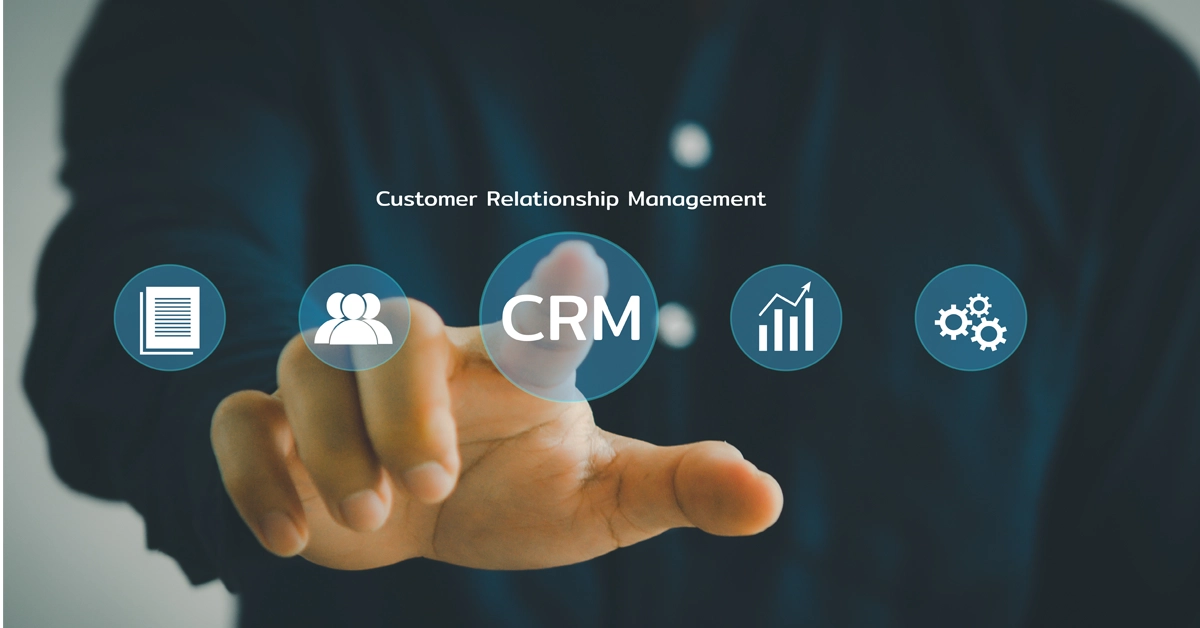What is a CRM Process and How can You Create Your Own?

Do you ever feel like you’re interacting with a lot of customers but struggling to build lasting relationships? Designing your customer relationship management (CRM) process is the key.
CRM or customer relationship management processes help you identify and maintain better relationships with your most valuable customers.
In this guide, we will discuss the CRM process, its importance for your business, and an effective way to create a CRM process.
Table of Contents:
- What is CRM?
- What is A CRM Process?
- How to Create an Effective CRM Process?
- Why is it Important to have a CRM Process in Place?
What is CRM?
CRM, or Customer Relationship Management, is a combination of practices, strategies, and technologies to manage all the interactions with customers and potential customers (leads).
The main goal of CRM is to improve customer relationships and, as a result, grow your business.
A CRM system tracks things like:
- Contact information
- Past purchases and interactions
- Communication history (emails, calls, etc.)
- Interests and preferences
What is a CRM Process?
The CRM process is a longstanding strategy to keep your customer interactions meaningful and personalized. Its purpose is to cover all aspects of customer relationships to increase retention, effectiveness, and profitability.
Knowing the CRM process requires understanding the customer lifecycle. The customer lifecycle includes all touchpoints, from their awareness to purchasing the product and endorsing your brand.
This process consists of five steps:
- Outreach: Generating leads and brand awareness
- Lead acquisition: Qualifying generated leads
- Lead conversion: Turning leads into customers
- Customer retention: Focusing on keeping customers happy
- Customer loyalty: Encouraging them to become brand advocates
By understanding these steps, your sales, marketing, business development, operations, and support departments can all function seamlessly.
How to Create an Effective CRM Process?
1. Establish Brand Awareness
Brand awareness lays the foundation for your CRM process by generating leads and building trust.
Your brand awareness efforts attract attention and capture initial interest, while your CRM takes those potential customers and cultivates relationships through personalized communication.
Imagine it as a one-two punch: brand awareness gets them in the door, and your CRM keeps them coming back.
2. Capture and Organize Leads
After introducing potential customers to the brand, the next step is to convert their interest into actionable leads. Collecting customer information and preferences by placing signup forms, webinars, and live chats on your website could be a great way to acquire leads.
This is where CRM softwares plays a vital role, helping you organize and prioritize these leads for more personalized follow-up actions.
3. Turn Leads into Customers
Converting leads into customers requires a strategic approach, which includes leveraging the detailed lead insights stored in your CRM.
Understanding their needs and interests to craft personalized communication strategies can help you convert your leads into customers.
4. Enhance Customer Satisfaction
Focus on valuing customer preferences and resolving issues promptly to provide efficient customer service to your customers.
A CRM system facilitates this by providing you access to comprehensive customer profiles and interaction history. This allows your service team to provide personalized support to ensure customer satisfaction.
5. Drive Upsells
Providing customers with a better experience can prompt them to buy money from you. Suggest high-value solutions to your customers based on their needs, preferences, and interests.
Presenting personalized recommendations and offers via email could encourage customers to purchase additional products or enhanced services.
Using a CRM database lets you collect information about customers’ purchase history, behavior, needs, and preferences and helps track problems, which opens the opportunity to upsell
Why is it Important to have a CRM Process in Place?
A well-defined customer lifecycle management approach is of great help for growing your business. Below is how an effective CRM process plays a vital role in this strategy, highlighting the key aspects that enhance your relationships with customers.
1. Leverages Accurate Business Analytics
CRM tools provide powerful analytics capabilities, allowing you to gather in-depth information about your customers. It is also used to improve customer service and boost business growth.
2. Improves Sales Team Efficiency
A CRM process streamlines the sales pipeline, prioritizes leads, and guides your sales team through each step. This reduces wasted effort and ensures priorities are kept on track so you can optimize your reach.
3. Enhances Data-Driven Decisions
You gain valuable insights by tracking customer interactions and sales data within the CRM process. It allows you to identify trends, understand customer behavior, and make informed decisions about marketing strategies, product development, and resource allocation.
4. Strengthens Team Collaboration
The CRM process breaks down silos between departments. Sales, marketing, and customer service teams can all access the same information and updated contact records anytime, anywhere.
Key Takeaways
By implementing a well-defined CRM process, you transform customer interactions into lasting relationships. The strategy outlined above enables you to identify high-value customers, personalize their journeys, and ultimately boost sales.
Remember, the CRM process isn’t just about technology – it’s about building a customer-centric foundation for long-term success.
Related Post
Copyright © gocustomerexperience.com. All Rights Reserved.




